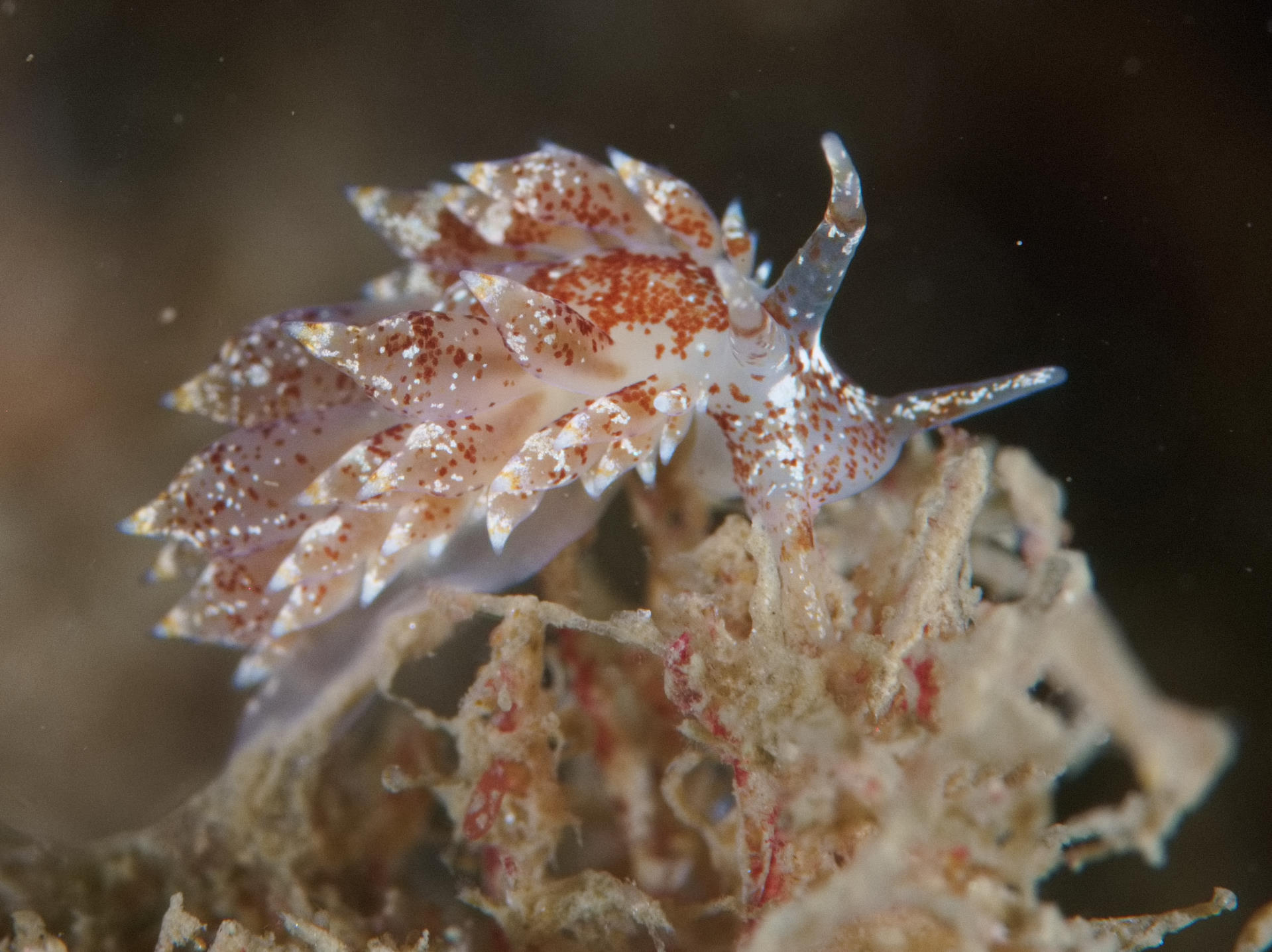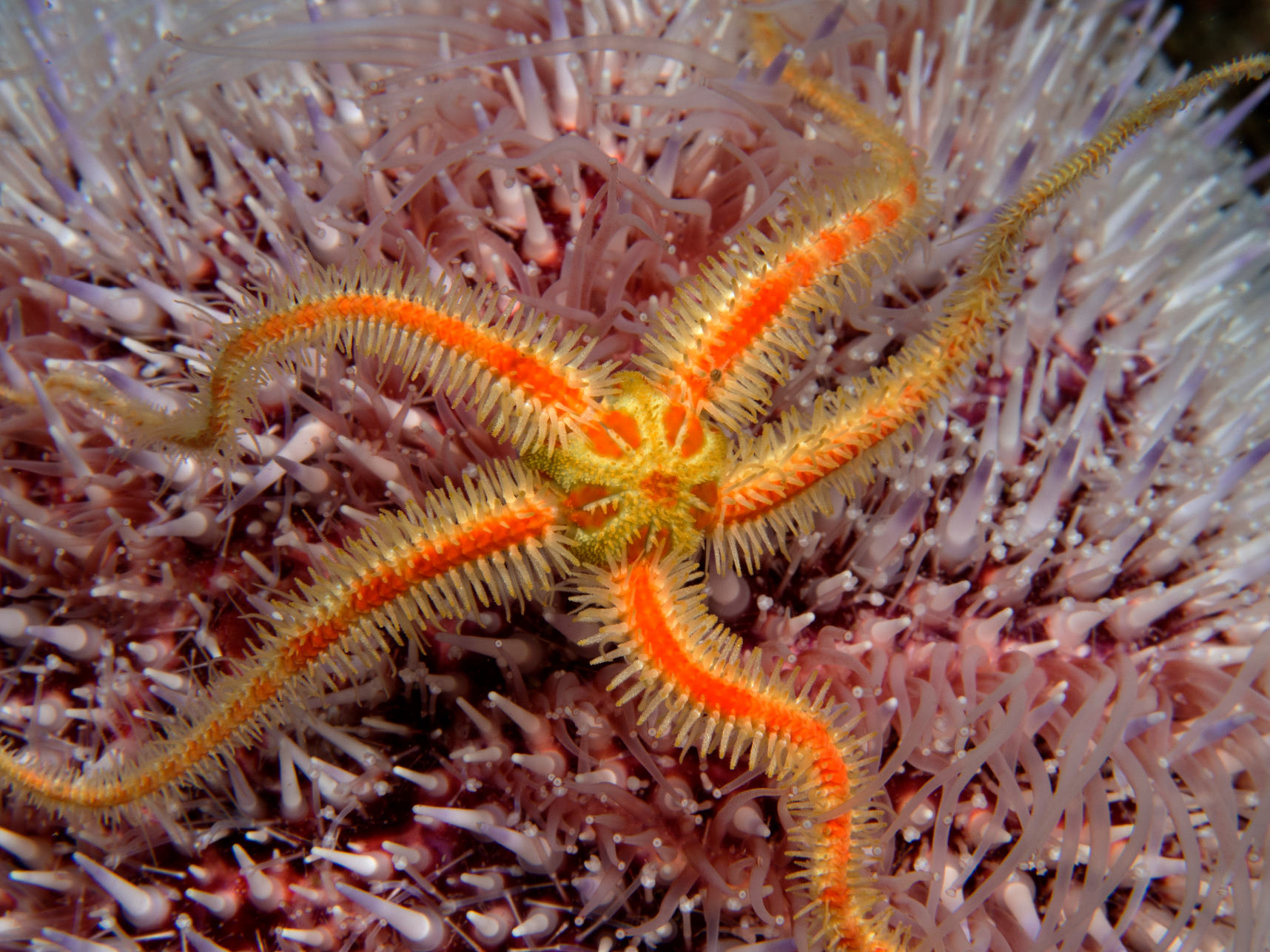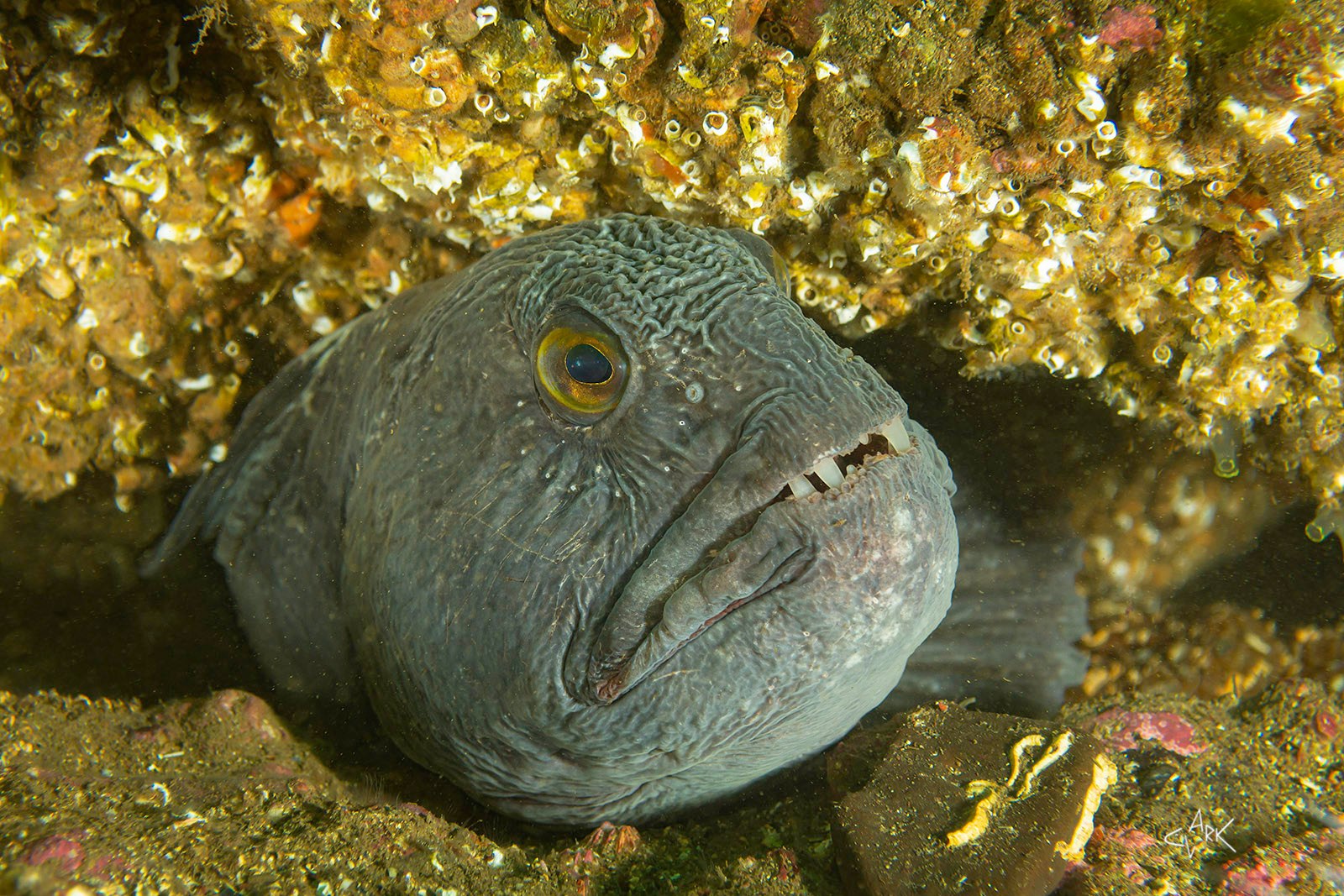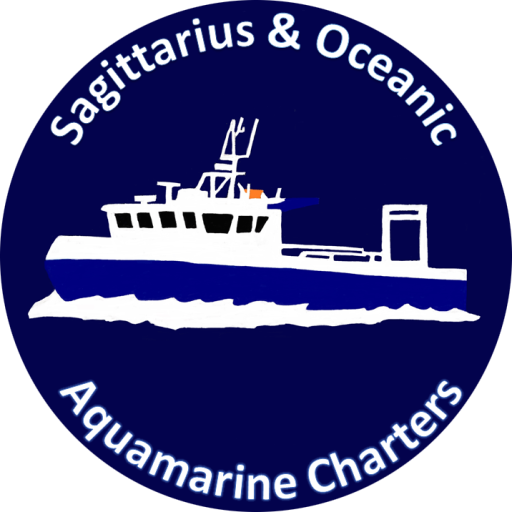Reef Sites
Reef Sites - to be completed

Burnmouth Caves
This dive is situated south of Eyemouth, down the coast a few miles. It consists of two caves, which are actually joined at the back by a small arch, so you can go in to one and out of the other. In the caves, the depth is only about 3 - 6 metres. The cave walls are also covered with life, as the caves catch quite a bit of wave action, making them a high energy environment. So the cave walls have short turf of bryzoans, hydroids, anemones and other turf life. It is on this that the nudibrances graze and breed. There is a reef which leads out from the caves, down to about 26m depth eventually. But the reef is great to follow (only to the depth you want) as it is covered in anemones, hydroids and other colourful life. Wrasse and sometimes wee squid can be seen here too.

Waddy Rocks
This is a good dive to do, when there is a north easterly swell as it is quite sheltered. It is a lower energy site than some of the others here, so has less anemones and hydroids than the others, but it does make up for this with its fish life. It is here that we have seen John Dory fish, sand eels and three spine stickle-backs. The landscape is boulders down to about 15m depth, then patches of sand. The sand does shift and move, but often has little gobies on it, as well as various different crabs. Between the boulders, you can find lobsters, crabs and many squat lobsters. If you are lucky you may also find pipefish and butterfish too. The kelps which grow on the rocks provide a home for many small critters too. This is just a nice easy dive, suitable for all levels of diver.

Petticowick Bay
A sheltered bay, very good to hide from a south westerly swell. You can in theory do this as a shore dive but if you don't want to do yourself in climbing up a steep hill, then a boat is the best option. There are a couple of wrecks in the bay but the most obvious one and the only one with a boiler (or two) remaining is the Ringholm (Odense). It sits in about 6-8 metres depth but the boilers do get moved around after storms. There is quite a bit of life growing on the wreckage, so it can be hard to find, especially when the kelp has covered struts and sheets. The rocky reefs here range from bare rock, to walls covered with dead mans fingers, plumose anemones and large colourful horse anemones. If you know the bay well, you may find the letter box - a rather tight rock swim though too!

Black Carrs
So much to say about this site, not just wolf fish, but octopus, many anemones, at least 2 anchors and angler fish on a good day! This reef can be dived from the south west entry point, close to Waddy Rocks, from where you can follow the reef shoulder left, down in to the deeper water, passing steep walls covered with soft corals. As you go deeper (about 22m depth) you will find a large classical anchor. Often this is used as the turn around point. The other way to dive this site is from the bottom up.... The boat will drop you in to the north east on the reef on a knoll of rock. Swim from here at 110 degrees, to the reef, where you will find the wolf fish hotel (last time we found 14!), then you can follow the reef up and around to the start of Waddy rocks.

Anemone Gullies
This is definitely a WOW site. There is one main gully, but most of the gullies in this area are plastered with life. The main anemone gully leads out from a gap in the cliffs, in to which the boat can go on a calm day. You drop down, and follow the main reef as you head north east, with your right shoulder. The rock is covered with dahlia anemones of all colours, plumose anemones and lots of tall feather hydroids. The gully is pretty obvious, taking you down to 26m where you reach the sand. It is here that you can find crabs, lobsters and little cuttle fish and squid too.
From here you can turn around, or try and find a parallel gully to head back up to shallow water. Neighbouring gullies are often covered with dead mans fingers - wall to wall.

Cathedral Rock
Again, this is a dive that you can do from shore, as long as you have good navigation skills. But for ease, it can also be done from a boat. The arch is large, double layered and set in about 10-12m of water. So you can swim through the main arch, or the layer above that. This is a high energy site, as the water if forced through the arch, only resting during slack water. As a result the growth of sponges, hydroids and bryzoans is quite spectacular. Lots of colourful animals living on the rock faces. The fish life here is superb too, often a shoal of saith are present, along with wrasse, butter fish, small cod, not just in the arch, but as you swim through and follow the reef down back in to deeper water. When the sun shines this is a very scenic dive.
